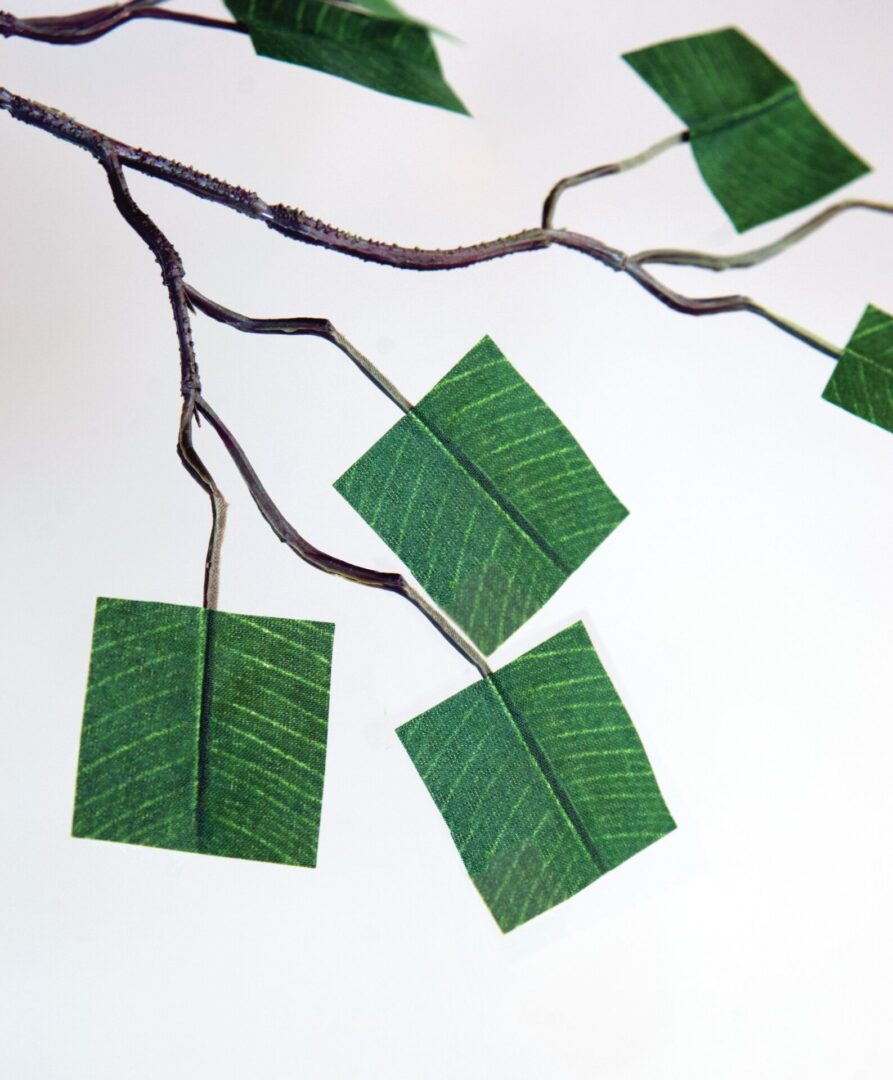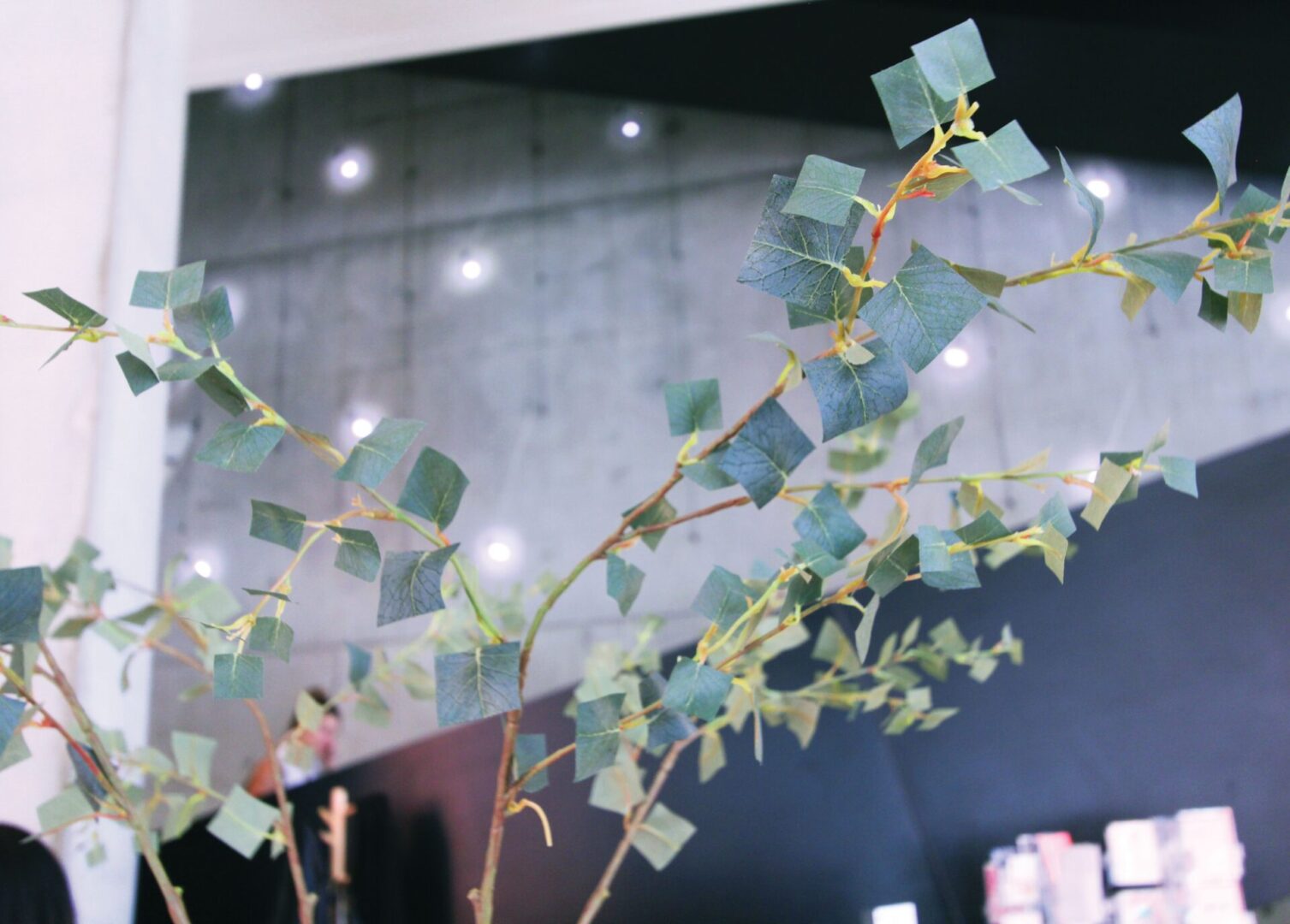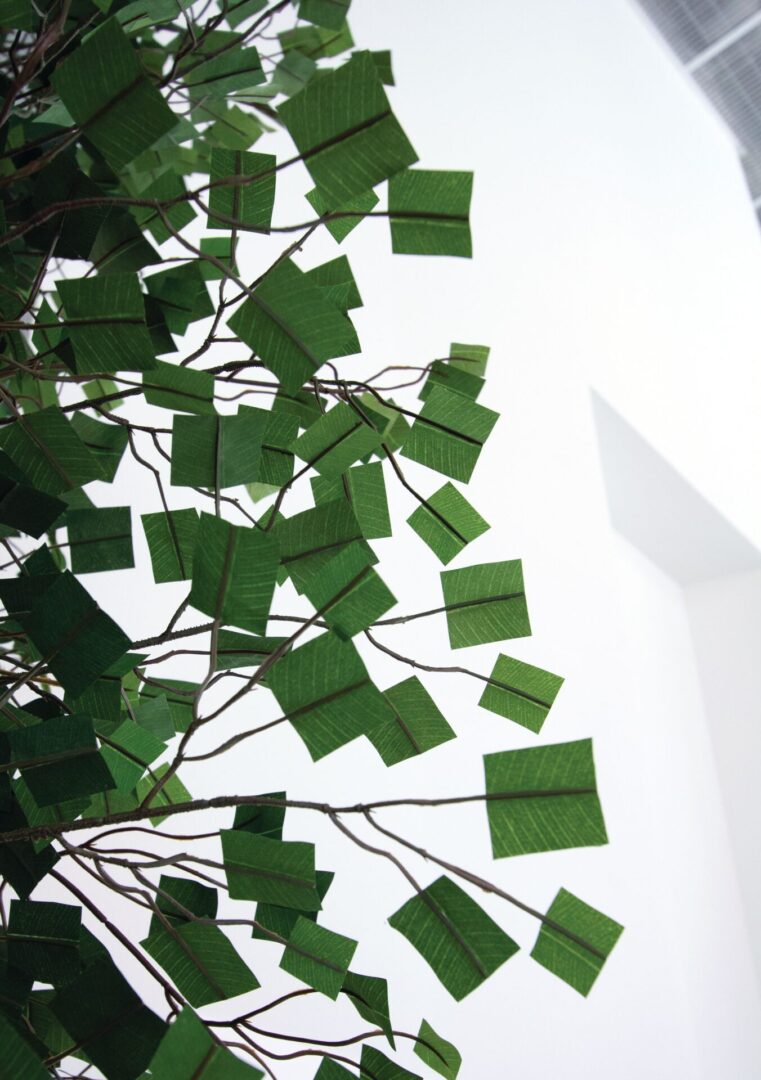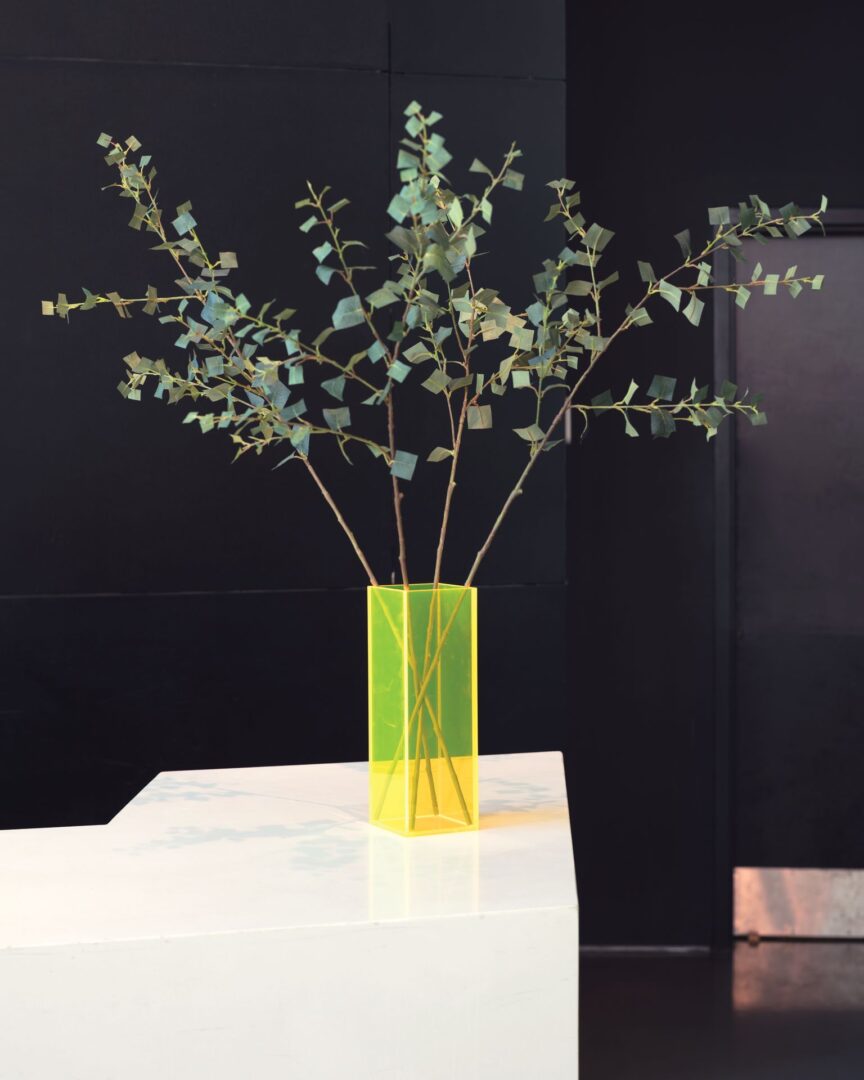Half-Truths at the Contemporary Art Center, Cincinnati, OH, 2017
Faux Faux (Lobby Life), 2017; Hand-cut ficus trees, plywood, latex paint, concrete
Half-Truths is Benson’s first museum survey exhibition. Works spanning the past decade reveal her quietly intense practice that splits, fractures, excises and skews archetypal structures into poignant re-assemblies.
Excerpts from Jane Benson: Half-Truths
by Steven Matijcio
In her hands, fracture is the most accurate reflection of our present, and the most necessary precursor of tomorrow – echoing Groys’ identification of iconoclasm as, “a mechanism of historical innovation” and “a means of revaluing values.” She is self-professedly “more comfortable with something being destabilized rather than complete,” systematically deconstructing “the experience of the everyday” as what art historian and critic Nuit Banait calls “an accumulation of contexts, habits and environments that can be reshaped once they are revealed as artificial.” Piercing the enduring, if no less illusory integrity of the gestalt, she confronts objects, words and environs that have ossified into absolutes – taking them apart and putting them back together to produce vexing new formations.
...
In her every object and action Benson embraces entropy, evincing Banai's observation that, "While the cut is a formative element in the configuration of this expanded field, there is an uneasy sense that these elements are simultaneously held together by tenable threads that may unravel with only the gentlest tug." For this reason, A Place for Infinite Tuning (2015) may be the most synecdochical of all Benson's series – congregating split instruments, spliced flora and precarious mirrored plinths into three dimensional cubist arrangements that teeter with graceful tension. In a place of perpetual becoming, or perhaps imminent undoing, their contingency speaks to a heightened, but unstable state that is as true of the object, as us, the observer. Every ostensible "still life" in this place for infinite tuning is anything but static, and our perspective grows kaleidoscopic as the view is multiplied across fractal mirrored planes. We see ourselves in this palimpsest, but the hand of the artist is inconspicuous once again – manifest in little more than Velcro straps that hold the bifurcated instruments together. It is to her credit and contingency that everything here feels like it has always been this way. We cannot look more closely or study more intensely to know this constellation any better; they are, like all her works, evocative, elusive and enigmatic at once. This is the truth of Benson's half-truths.









